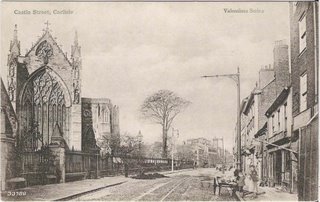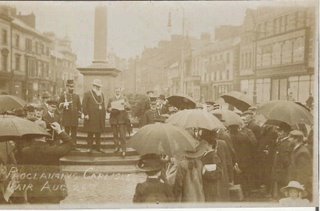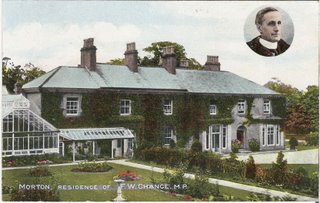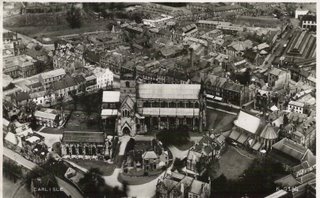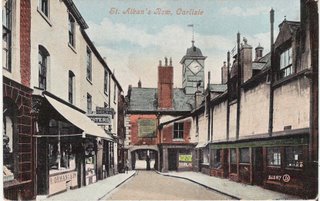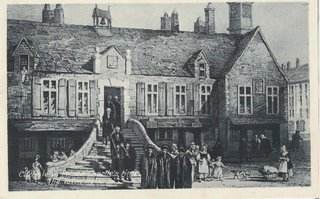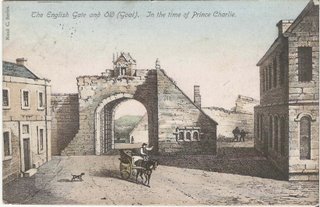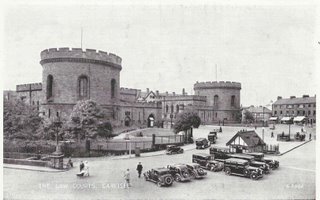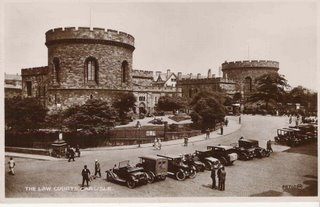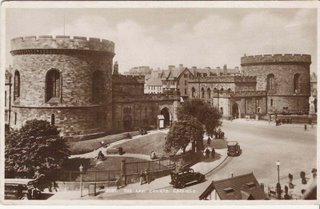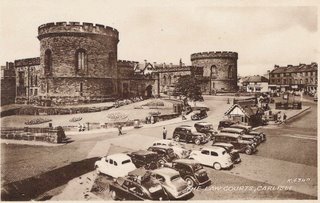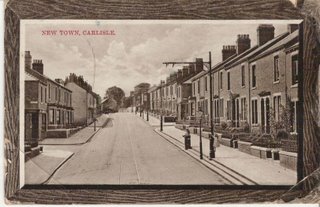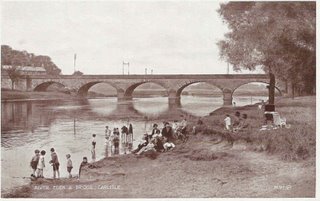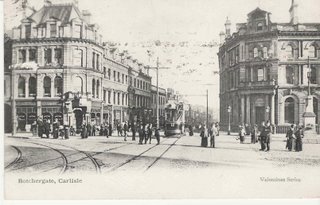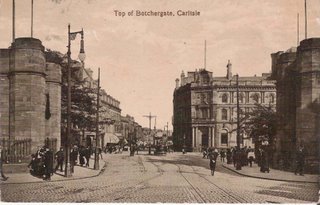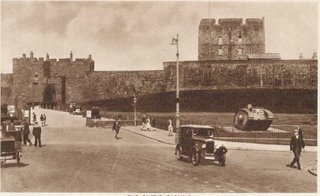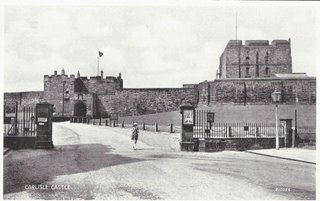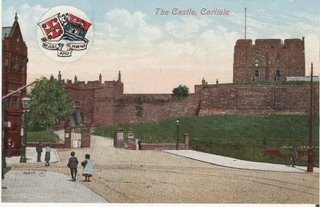Rickergate, Carlisle Fair & The Volunteer Fire Brigade
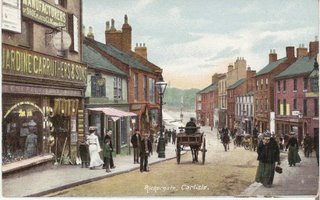
Click on image to enlarge.
Rickergate probably obtained its name from Richard (personal name) and gata (street), access to Rickerby (Richard's land) would be from The Scotch Gate and this street.
In this view of about 1903 imagine yourself standing outside Debenhams entrance at the bottom of Scotch St and looking down towards the Civic Centre which stands just about where the end buildings are on the right.
None of these buildings remain today although parts of Rickergate were only demolished in the 1960s to make way for the Civic Centre.
Rickergate itself only began where Warwick Street is today and on the other side where Drovers Lane used to be. Jardine Carruthers the Ironmongers address is 10 Scotch Street. Next to him (the shop with the clock) is Frederick Goodger (Watchmaker).
In the short distance from the Civic Centre to Drovers Lane Rickergate in 1906 had no less than SIX public houses being .. The Drove Inn .. The Ship Inn .. The Fox & Hounds .. The Durham Ox .. The Bay Horse and The Three Crowns. The opposite side had only four .. The Malt Shovel .. The Blue Bell .. The Scotch Arms and The Wheatsheaf Inn. Not bad for street only about 200 metres long either side.
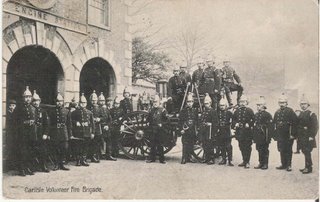 Carlisle Volunteer Fire Brigade in their new station in Spring Gardens Lane (the little street that runs along where the Bowling Green Hostel is today).
Carlisle Volunteer Fire Brigade in their new station in Spring Gardens Lane (the little street that runs along where the Bowling Green Hostel is today).The picture must be from between 1896 (when the station was opened) and 1904 (when the Volunteers were disbanded).
I wonder how much those helmets would make on Ebay today?
 Last of all is this card of Carlisle Fair which was held on the Sands, The Turf Inn can be seen in the background.
Last of all is this card of Carlisle Fair which was held on the Sands, The Turf Inn can be seen in the background.The fun of the fair would have included boxing booths, freak shows, some wild animals as well as rides.
No doubt they proved profitable for some of Carlisle's dodgier characters.
This is the last of the cards for now, new cards will be posted as and when obtained. hope you've enjoyed them. David alias Paddock.
Don't forget you can always leave a comment if you have any info. on any of the cards or if you have any cards you want to sell, remember I'm only a poor old pensioner though. :-)
